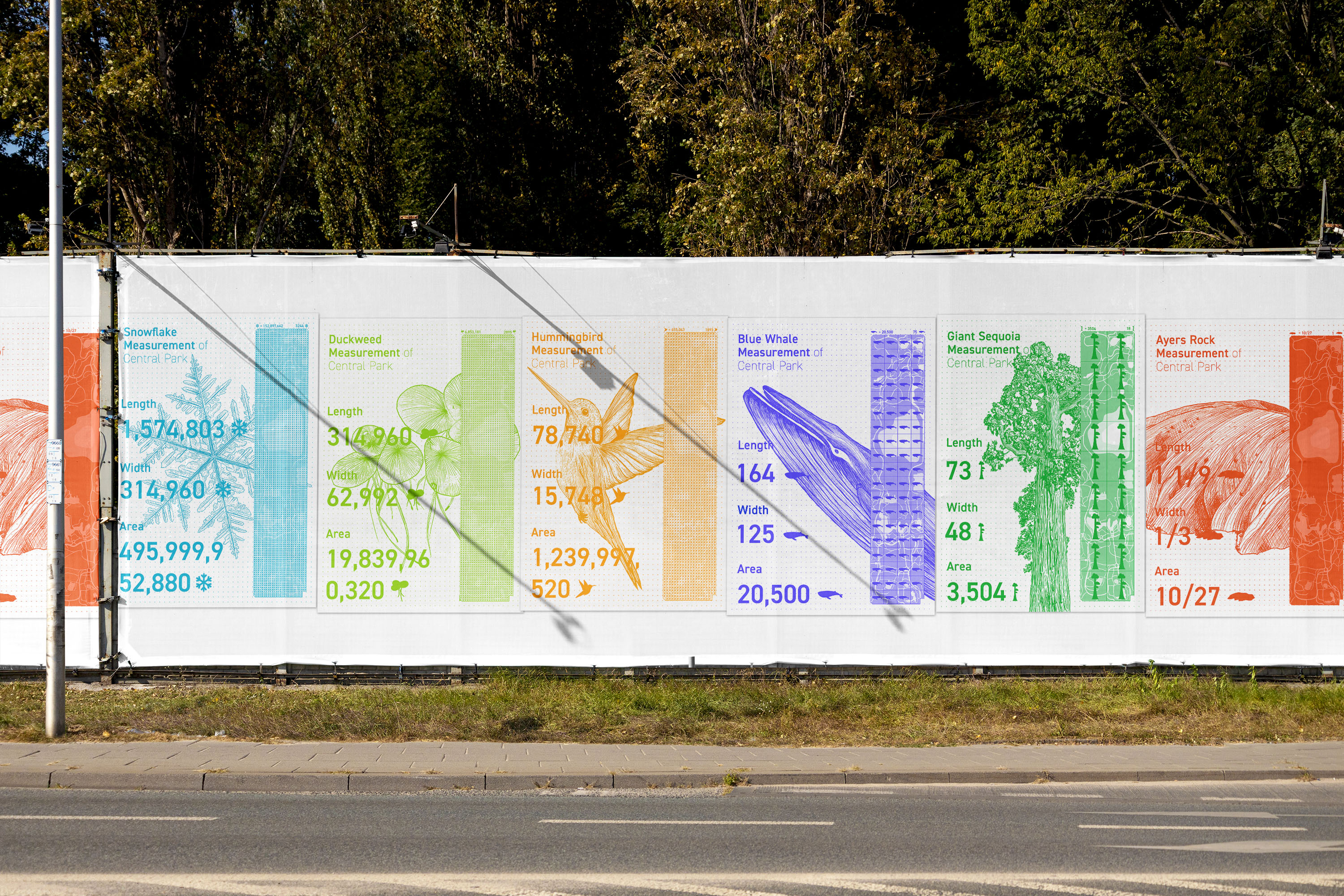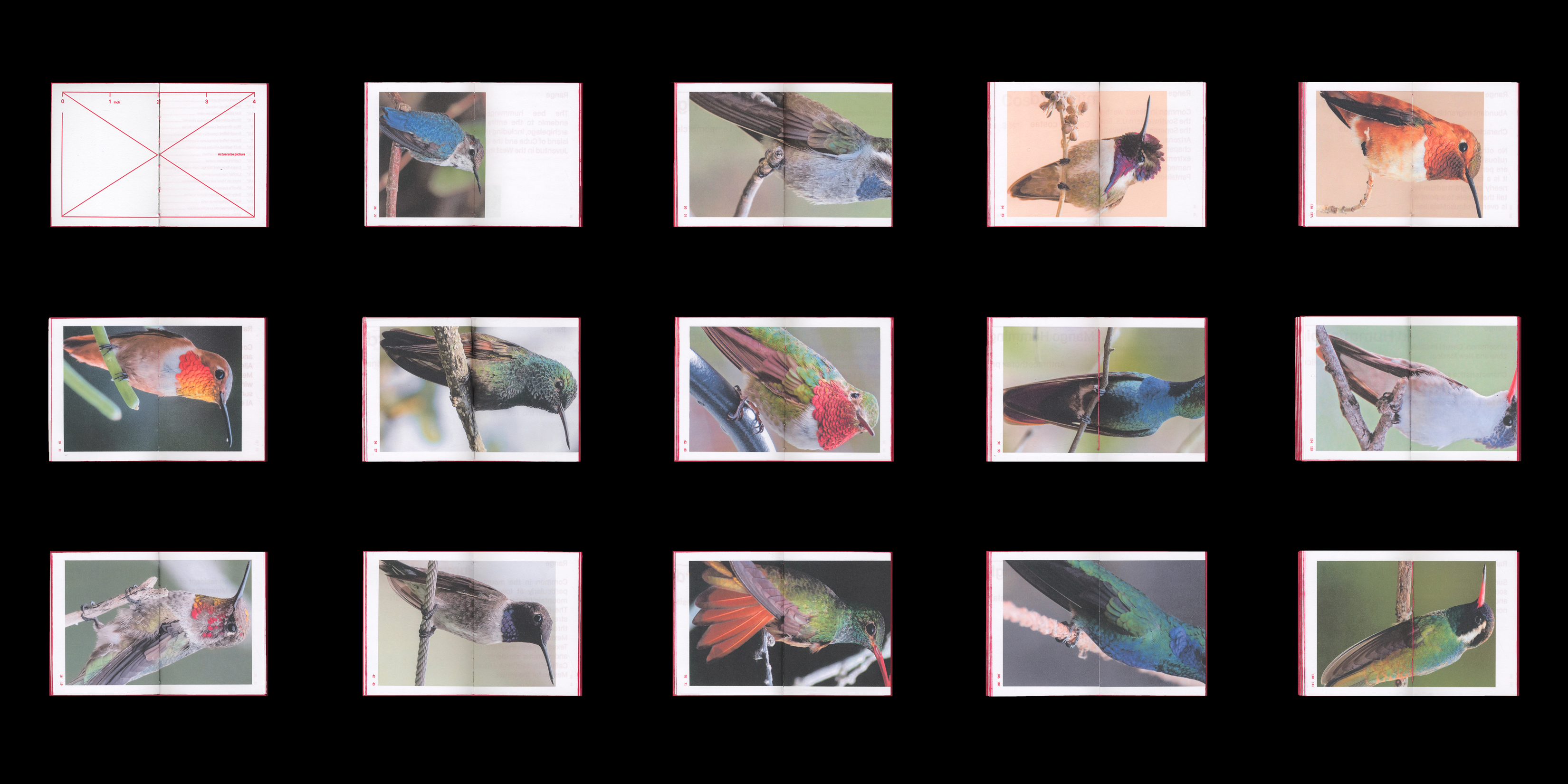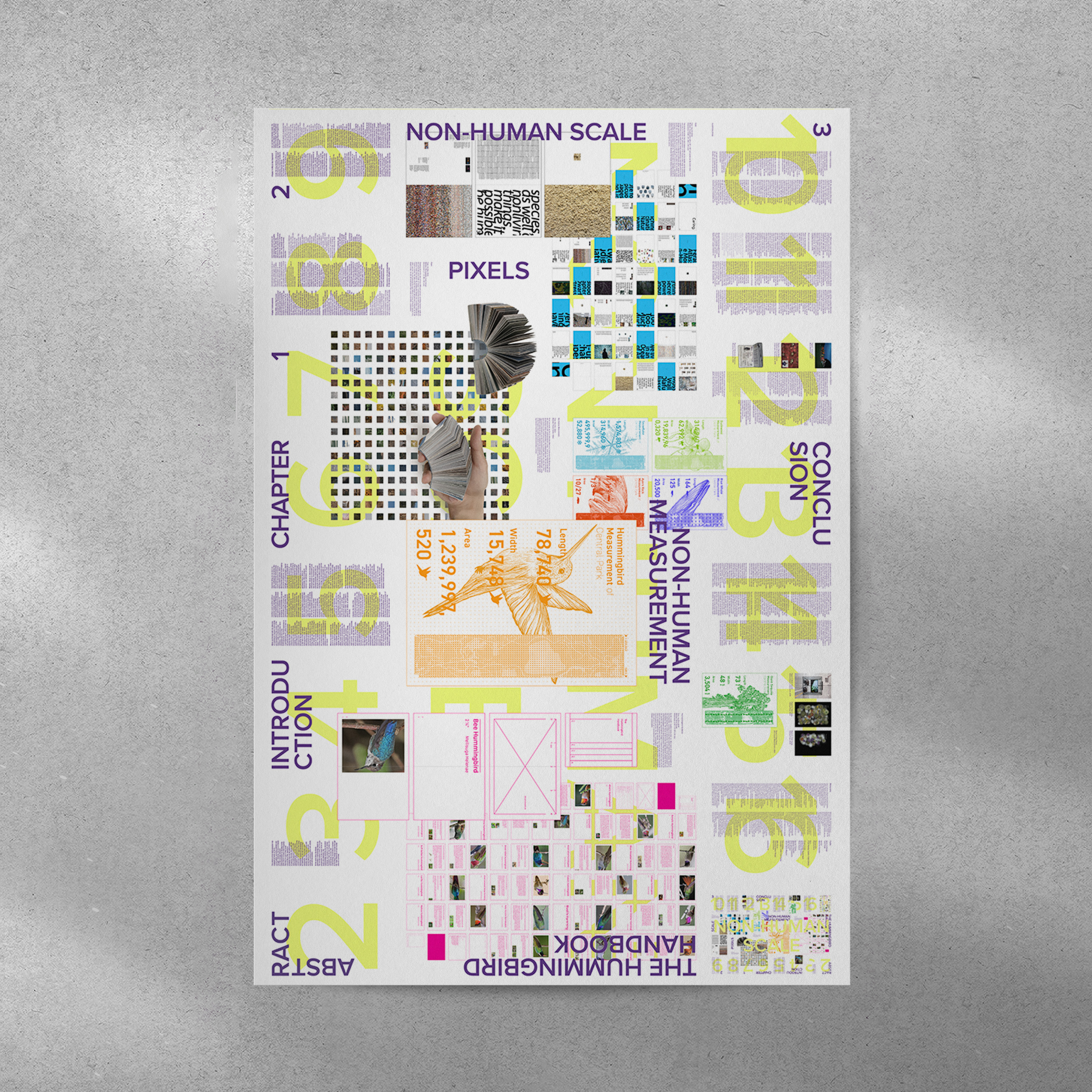Non-human Scale
Yuting Zeng
The advent of the Anthropocene has engaged all walks of life in conversation, provoking debate and thought. However, the term is flawed, as it has wrongly allowed anthropocentrism to develop to the point where humans have forgotten that they are part of the great community of life, leading to problems such as the deterioration of species diversity. In this regard, I generate a methodology based on transforming the non-human perspective. In the broad sense of scale, as a standard, this methodology switches the pinnacle of design and creates a new design framework from the non-human. In a narrow sense, as size, this methodology decentralizes humans by forming a design concept through the massive difference of non-human size as a contrast.

Non-human Measurement
From Leonardo da Vinci's Vitruvian Man to Le Corbusier's The Modulor, humans are obsessed with anthropometric scales, such as in industrial design and architecture where anthropometry is an indispensable part. The unit of measurement itself is in fact anthropocentric, for example, there are units like a foot. This project attempts to use the measurement system as a breakthrough, using different species as units to measure the central park. From the smallest birds to the largest mammals, from plants and animals to non-living things, decentering humans from the great numerical data contrast.

The Hummingbird Handbook
As the world's smallest living bird, we often learn all about hummingbirds in encyclopedias, zooming in to see their beautiful feathers and beaks. However, this mini-handbook wants to showcase the wonders of the hummingbird - its fascinating size. The layout of the book's design depends entirely on the size of the hummingbird species being presented. If the species exceeds the size of the spread, the hummingbird's image is cropped and the viewer can’t see the bird in its entirety. The project uses this as a way to get people to think about how to switch perspectives on species.. The width of the book is the smallest hummingbird species, the Bee hummingbird, and the book comes with a mini-ruler (2 ¼") as a measurement scale that allows non-humans to join the human conversation.
Non-human
This book discusses how non-human scales are far smaller and far larger than our own. It conveys the narrowness of the human scale range by presenting content from a very small scale, visual comparisons, and applications to book design systems. The content is a collection of different artists' projects that tackle the nonhuman like how to read lips from plant leaf stomata, visual languages created by machines from thousands of nature pictures, and a large map made up of punctuation marks etc. The book aims to stimulate a desire to explore the non-human world and to decenter the human being in the transition between the micro and the macro.
Pixels
Thinking about the idea of how different species, including humans, make up this planet like pixels make an image, I created this booklet pixelating different photos I took from nature. By dividing the images into countless small pieces I tried to convey the idea of how the human perspective is limited, we as all other species, are just passing through billions of years of Earth's history. In a larger scope, we are all small pixels that create a movable composition.
Non-human Scale
A book folded from 48 by 32 feet of paper.